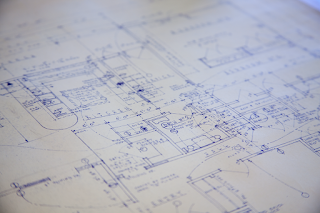A strategy is defined as a plan of action or policy designed to achieve a major or overall aim. Its synonyms include master plan, grand design, game plan, plan (of action), action plan, policy, program.At TBH Creative we believe that successful websites are those built strategically. Call it being creative with a purpose. We love exercising our creative muscles in design, content, and development, and we love it even more when those muscles are utilized to build something that helps achieve goals. That’s why we start every project with two key strategic phases designed to make sure that the end result is successful.
Your website is an ever-growing component of your marketing plan. As such, it deserves a well-conceived plan for its development and continued success. Whether you are building a new site or redesigning an existing website, strategy isn’t something that should be overlooked. Let’s review two key steps to building a smart, strategic website.
Phase 1: Discovery
 What can you tell us about your audience? What do they do on your website now? Do you have analytics to illustrate? What do you want them to do on your website? What existing marketing efforts do you have that the website can support or enhance?
What can you tell us about your audience? What do they do on your website now? Do you have analytics to illustrate? What do you want them to do on your website? What existing marketing efforts do you have that the website can support or enhance?These are just a few of the questions that should be considered in the discovery phase. Even if you’ve been in business for decades, a website design project is a good time to take a step back and consider your audience’s needs and your online communication goals.
TBH Creative uses a few tools to help guide the discovery phase:
Audience personas
You might have some solid marketing demographics but they likely don’t consider how your audience uses the Internet. Audience personas develop key audience targets that all members of the website team can keep in mind as we build your new website. Personas aren’t scientific research but they are an excellent tool to help keep everyone on the same track, particularly helpful when personal preferences might differ from what your audience wants to see. Learn more about the value of the audience persona.Kick-off meeting
No one knows your market better than your own internal team. The kick-off meeting gives everyone who will be working on your site the chance to talk to key members of your company. Together we discuss what’s working on your site and what isn’t. We review site analytics. We present audience personas. We discuss your goals for the website project. We dig into site organization. We look at example websites and functionality to help guide our next steps. We might even take a few minutes to brainstorm.To some that seems like a lot of work to do before anyone opens design files or types a line of code. However, the discovery phase establishes the expectations and makes sure the entire team is working together for common goals.
Phase 2: Foundation building
Now that the team is all on the same page, we need to build the foundation of your website. We’re still not opening design files or typing code but we are establishing the infrastructure that will make the design and development sound. The cornerstones of a TBH Creative website project include:
The cornerstones of a TBH Creative website project include:
Site architecture
Once goals are established, we’ll review analytics and determine audience needs. Then we’ll work to develop the site architecture. During this step, we’ll also create a site map to organize the content in a way that will help you communicate with your target audience in the clearest way possible. While it’s important to have a site architecture that is flexible for future growth, it’s also important to spend the time necessary making sure you’re covering all the bases now.Content
Too many times people think that the site should be designed and then content written to fit that design. The result of that process is a website that looks like a template—unprofessional and probably not flexible for future growth. The most successful website development projects work on content and design in parallel.The writer takes the site architecture, determines what information and elements need to appear on key pages, and begins to draft the content. This early content development is very focused on making sure the pages communicate what your audience needs and directs the audience where you want them to go (all of which we know from the Discovery Phase). Once that content is blocked out, the designer steps in to look at it and begin building the layout for these pages.
Wireframes
You may not have heard this term before but you can compare it to the blueprint of a house. Just like a blueprint, wireframes set the structure of each page of your site. Wireframes consider the audience, site architecture and early content drafts to layout pages that clearly and concisely communicate. Ultimately the wireframes dictate the content parameters and design placement (the fun, colorful stage of the project). They are an important foundation to make sure no content elements are left behind and help ensure the site architecture is realistic.Related articles:
When you’re ready for a website design project, be sure to ask your vendor about their strategic process. If it’s all talk and no substance, they may not be the right vendor for you. Strategy is important in website development from the very beginning.Need help with your digital marketing strategy? Talk to us
Images used via CC by 2.0; credits: magnifying glass (nathanmac87); blueprint (Will Scullin).
